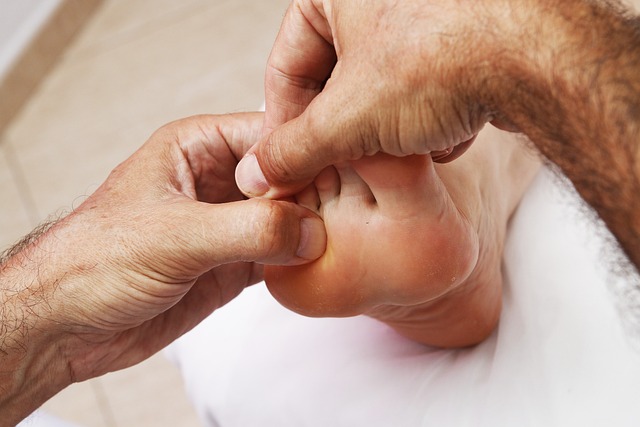Contrast therapy, involving alternating hot and cold temperatures, is a powerful tool for athletes aiming to enhance performance and shorten recovery times. This method stimulates blood flow, reduces inflammation, expedites muscle repair, and numbs pain signals. Athletes can incorporate contrast baths or showers into their routines, following personalized protocols and best practices, to experience improved performance, faster recovery, and enhanced overall well-being.
Enhancing recovery with contrast therapy techniques has emerged as a game-changer for athletes seeking optimal performance. This powerful tool, often overlooked, involves alternating between hot and cold exposures to stimulate various physiological responses. In this article, we’ll explore the science behind contrast therapy, its implementation in athletic routines, and the benefits it offers for accelerated recovery and improved performance. Discover best practices tailored for athletes to harness the full potential of contrast therapy for their recovery regimen.
Understanding Contrast Therapy: A Powerful Tool for Athletes' Recovery
Contrast therapy, a powerful tool in an athlete’s recovery arsenal, involves alternating between hot and cold temperatures during training or post-workout sessions. This technique leverages the body’s natural response to stimuli to accelerate muscle repair and reduce inflammation. By exposing muscles to heat, athletes promote blood flow, which delivers essential nutrients and oxygen for faster healing. Conversely, cold therapy constricts blood vessels, reducing swelling and numbing pain signals, providing immediate relief from soreness and discomfort.
This two-pronged approach, known as contrast therapy, is increasingly popular among athletes for its potential to enhance performance and shorten recovery times between intense training sessions. Whether post-workout or as part of a structured rehabilitation program, incorporating contrast therapy can support athletes in achieving optimal results, ensuring they’re ready to take on the next challenge.
The Science Behind Contrast Therapy Techniques
Implementing Contrast Therapy in an Athletic Routine
Integrating contrast therapy into an athlete’s routine can significantly enhance recovery and performance. This therapeutic approach involves alternating between hot and cold stimuli, such as immersing oneself in hot water followed by a quick switch to cold. For athletes, this can mean using a contrast bath or shower, where they spend a few minutes in scalding water before rapidly switching to icy-cold water. Such a practice has been shown to stimulate blood flow, reduce inflammation, and expedite muscle recovery.
Regular implementation of contrast therapy can be a game-changer for active individuals. By promoting efficient waste removal and nutrient delivery, it aids in preventing muscle soreness and fatigue. Moreover, the mental focus required during contrast baths can foster mindfulness, which is beneficial for managing athletic stress and improving overall well-being. This simple yet powerful technique deserves a place in every athlete’s recovery regimen.
Benefits and Best Practices for Optimal Athlete Performance
Contrast therapy, involving alternating hot and cold stimuli, has emerged as a powerful tool to enhance recovery and optimize athletic performance. For athletes, this technique offers numerous benefits, including reduced muscle soreness, improved blood circulation, and faster post-exercise recovery. By exposing the body to sudden temperature changes, contrast therapy stimulates various physiological responses that aid in repairing and rejuvenating overworked muscles.
To maximize the advantages of contrast therapy for athletes, certain best practices should be followed. These include designing specific protocols tailored to individual athletic demands and recovery needs. Timing is crucial; applying contrast therapy soon after intense exercise enhances its effectiveness. Additionally, ensuring proper hydration before and after the treatment prevents dehydration or temperature imbalances. Athletes can also incorporate contrast showers, ice baths, or thermal blankets as part of their post-workout routines, allowing for a comprehensive approach to recovery that complements their training regimens.
Contrast therapy techniques offer a powerful tool for athletes looking to enhance their recovery and optimize performance. By understanding the science behind these methods, incorporating them into training routines, and adhering to best practices, athletes can take advantage of contrast therapy’s ability to reduce inflammation, stimulate blood flow, and accelerate muscle repair. This holistic approach not only shortens recovery times but also improves overall athletic performance, making contrast therapy a valuable asset for any serious athlete.
